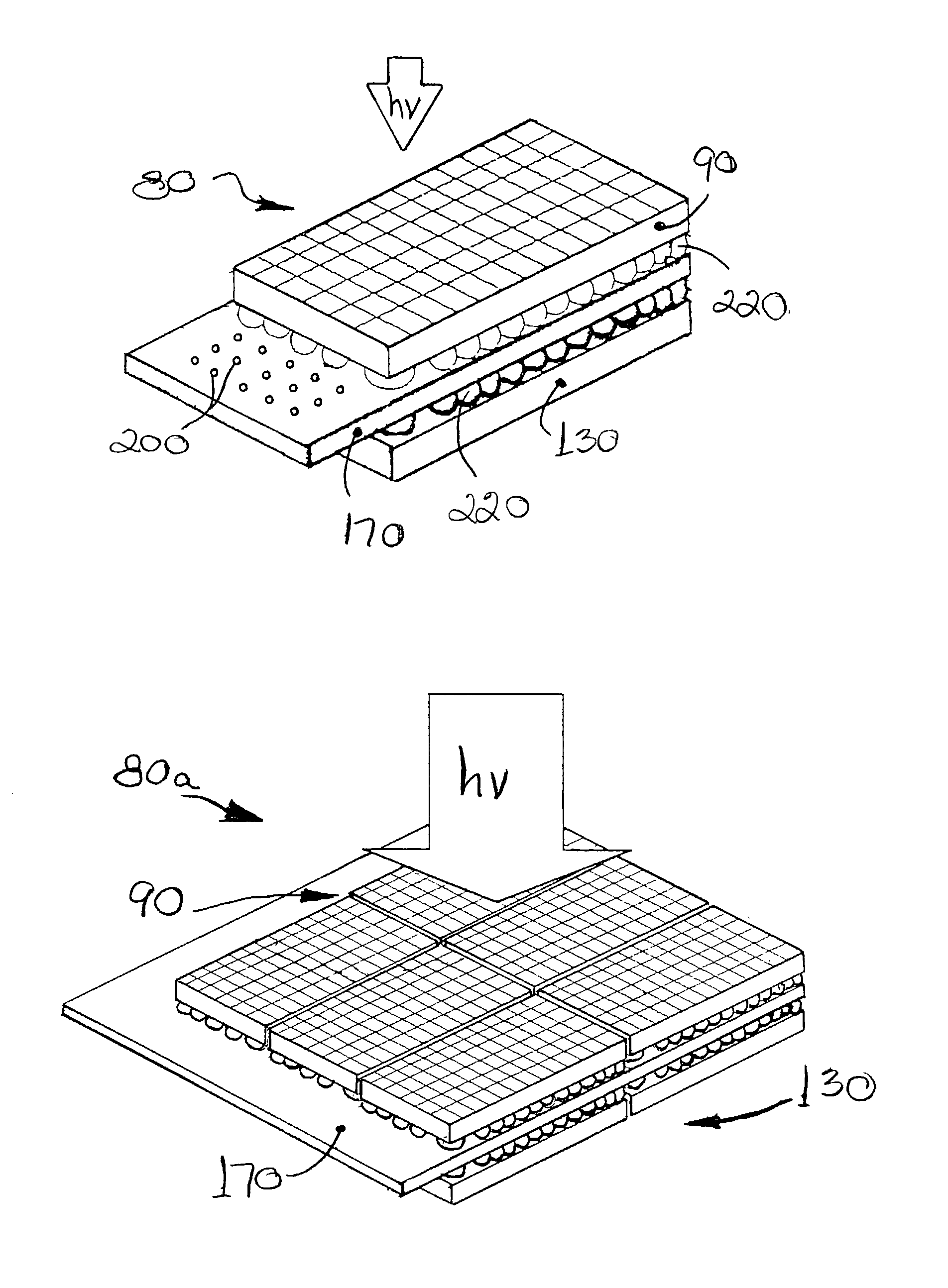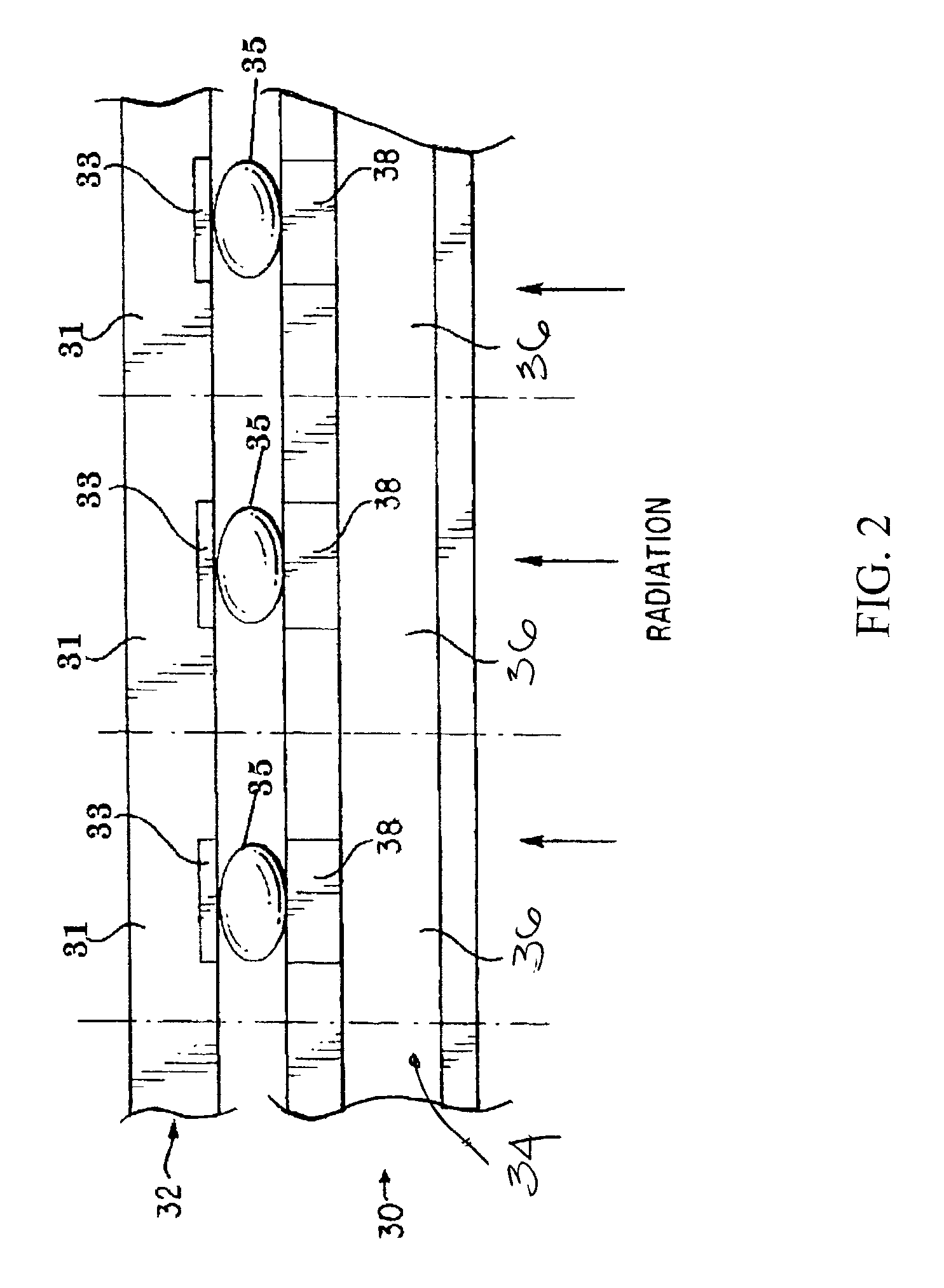Radiation imaging device and system
a radiation imaging and imaging device technology, applied in radiation measurement, instruments, electrical equipment, etc., can solve the problems of limiting the planar area of the detector and readout substrate that can be bonded together, the imaging area is limited by current semiconductor manufacturing, and the imaging area is even more limited, so as to reduce or minimize the amount of imaging dead area, improve image quality, and increase the imaging area
- Summary
- Abstract
- Description
- Claims
- Application Information
AI Technical Summary
Benefits of technology
Problems solved by technology
Method used
Image
Examples
Embodiment Construction
[0051]Referring now to the drawings, the details of preferred embodiments of the present invention are graphically and schematically illustrated. Like elements in the drawings are represented by like numbers, and any similar elements are represented by like numbers with a different lower case letter suffix.
[0052]As exemplified in FIG. 5A, in a preferred embodiment, the present invention is a SVCASIC type digital imaging device 80 for imaging x-ray and gamma-ray radiation energy preferably in the energy range of 1 keV to 500 keV. The digital SVCASIC imaging device 80 comprises two semiconductor substrates, a detector substrate 90 and a readout / signal processing substrate 130, separated by and bonded to an intermediate substrate 170. The substrates 90, 130&170 have a substantially planar configuration and are disposed adjacent each other with their planes in a parallel to form a laminate structure in the assembled imaging device 80. In an alternative preferred embodiment exemplified i...
PUM
 Login to View More
Login to View More Abstract
Description
Claims
Application Information
 Login to View More
Login to View More - R&D
- Intellectual Property
- Life Sciences
- Materials
- Tech Scout
- Unparalleled Data Quality
- Higher Quality Content
- 60% Fewer Hallucinations
Browse by: Latest US Patents, China's latest patents, Technical Efficacy Thesaurus, Application Domain, Technology Topic, Popular Technical Reports.
© 2025 PatSnap. All rights reserved.Legal|Privacy policy|Modern Slavery Act Transparency Statement|Sitemap|About US| Contact US: help@patsnap.com



